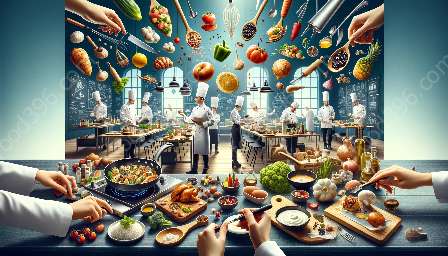Menu design is a crucial aspect of the culinary industry, playing a significant role in attracting and retaining customers. It combines artistic creativity with strategic planning to create an appealing and functional menu that reflects the culinary identity of an establishment.
Menu Design
Menu design is the creative process of crafting a visually appealing and informative menu that showcases the offerings of a restaurant, cafe, or any culinary establishment. A well-designed menu should not only be visually attractive but also easy to navigate, informative, and reflective of the establishment's brand and culinary style.
Elements of Menu Design:
- 1. Layout: The layout of a menu determines how items are organized, making it easy for customers to find what they are looking for. A well-structured layout can lead to increased sales as it guides customers' choices.
- 2. Typography: The selection of fonts and typography sets the tone for the menu. It should be easy to read and complement the overall design.
- 3. Imagery: High-quality images of food items can significantly impact customers' choices. Visual representations of dishes can evoke desire and increase sales.
- 4. Color Scheme: Colors can convey the personality of the establishment and influence customers' emotions. Understanding color psychology is essential in selecting an appropriate color scheme for the menu.
- 5. Descriptions: Well-crafted descriptions of dishes can entice customers and provide them with an understanding of the ingredients, flavors, and cooking methods used.
Menu Planning and Development
Menu planning and development is the strategic process of creating a menu that aligns with the culinary vision, customer preferences, and market trends. It involves a careful consideration of the target audience, cost of ingredients, and operational capabilities of the establishment.
Key Considerations in Menu Planning:
- 1. Market Analysis: Understanding the preferences and expectations of the target market is crucial in crafting a menu that appeals to the intended customer base.
- 2. Seasonality: Menu planning should take into account the availability of seasonal ingredients, allowing for creative and timely menu changes that showcase fresh and locally sourced produce.
- 3. Culinary Trends: Staying abreast of culinary trends and innovations enables establishments to offer unique and appealing dishes that set them apart from competitors.
- 4. Cost and Pricing: Balancing the cost of ingredients and the pricing of dishes is essential for maintaining profitability while providing value to customers.
Culinary Training
Culinary training is an essential component in producing menus that reflect culinary excellence and innovation. A well-trained culinary team is able to execute menu items with precision, consistency, and creativity.
Components of Culinary Training:
- 1. Fundamental Techniques: Training in classic culinary techniques forms the foundation for creating diverse and high-quality menu items.
- 2. Ingredient Knowledge: A deep understanding of ingredients and their applications enables chefs to develop innovative and harmonious dishes.
- 3. Menu Execution: Culinary training should emphasize the consistent and efficient execution of menu items, ensuring that the vision of the menu is realized with each plate that leaves the kitchen.
- 4. Creativity and Adaptability: Encouraging creativity and adaptability in culinary training empowers chefs to experiment with new flavors, techniques, and presentations, fostering menu innovation.
By integrating effective menu design, meticulous planning and development, and comprehensive culinary training, a culinary establishment can create a compelling and cohesive menu that resonates with customers and supports the overall success of the business.

